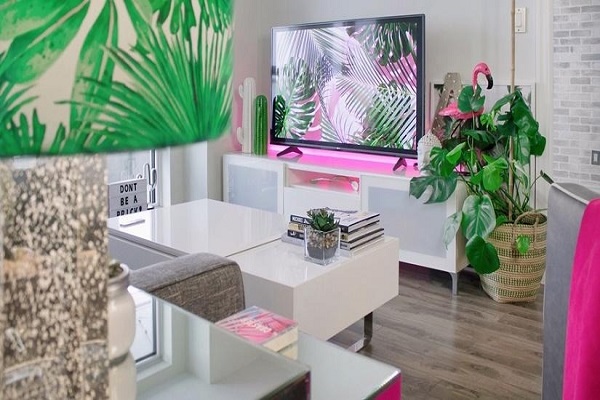
Follow us Now on Telegram ! Get daily 10 - 12 Interesting Updates. Join our Telegram Channel https://t.me/OhWomen
Download Telegram App before Joining the Channel
Just like smartphone technologies have been around for years and are always developing and improving. Home tech products also utilise computers and other futuristic gadgets to perform a variety of automated tasks that are generally focused on one goal, making our life simpler. This trend has further picked up in the wake of the pandemic wherein homebuyers are now looking for smarter technology such as no-touch features, home automation, and applications that lessen the number of high touch points in homes.
Smart faucets: Equipped with features such as temperature gauges and efficiency sensors, smart faucets are slowly making their way into homes. They make it easier for people to be careful about how much water is used in their homes, and it is possible to design faucets that can save up to 15,000 gallons of water per unit per year. A critical resource such as water can thus be conserved. Using this technology also conserves energy and since no valves need to be touched, smart faucets are hygienic and contamination-free.
Wireless sensors for doors and windows: These are high-tech devices used for monitoring doors and windows that can provide perfect security for homes and offices. It is a cost-effective security system that alerts homeowners of any suspicious activity. It can be easily synced via the help of smartphone apps and can help people keep a track of the safety of their homes all day long.
Smart Air Purifiers: With increasing levels of indoor pollution in our cities, air purifiers have become a must-have for homes. The importance of breathing fresh and clean air has never been greater. A good air purifier can cut down on coughing, irritated eyes, sneezing, headaches, and other symptoms that are caused by tiny pollutants floating around in indoor spaces. As a result of these filters, airborne toxins from the air are removed, especially those that are known to cause significant health problems.
Smart Home Locks: Smart locks can be keyed or keyless, allowing the deadbolt to be engaged by a code or by a key. New technology also provides tools such as burglar protection, requiring a person to enter random numbers before entering the code, automatically locking the door after 30 seconds, and alerting security systems in case of an intruder.
Smart Lighting: A growth in smart city projects and the development of smart buildings are driving the adoption of smart lighting, thereby boosting the market’s growth. Consumers look for features such as dimming, colour change, and mood settings in their lighting systems now. Google Home and Alexa have been leveraging IoT ecosystems to make products that can be controlled via voice assistants.
With the spread of smart devices and affordable internet connections, the demand for home automation is poised to increase. Using technology will thus further revolutionise the way we live. Home appliances today offer smart, connected, and energy-efficient features that enhance customers’ lifestyles. Smart Home systems have seen massive growth and adoption globally in the past 2 to 3 years, and now Indian consumers are also embracing the Smart Home revolution.
Source - IANS